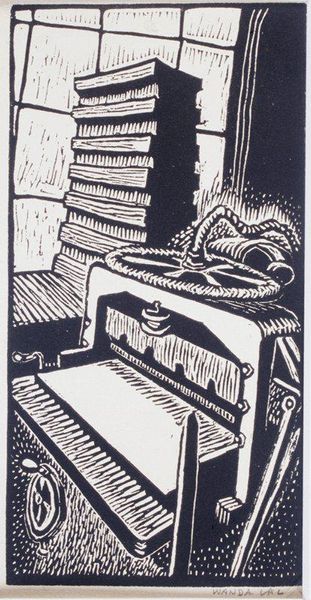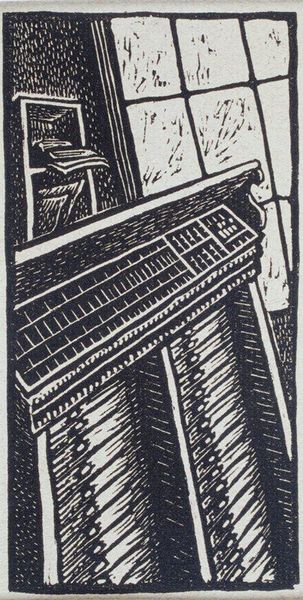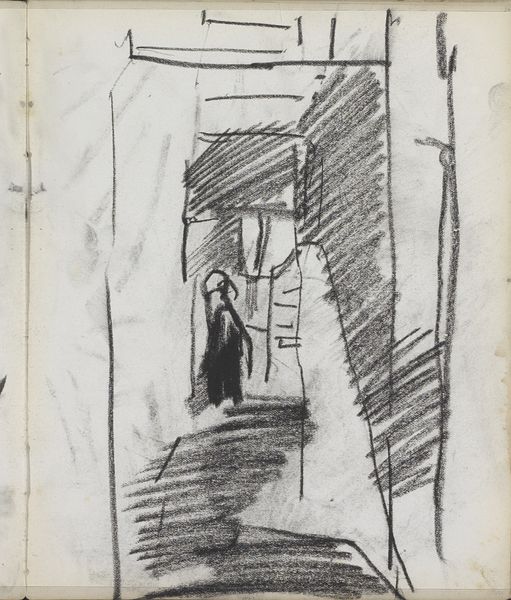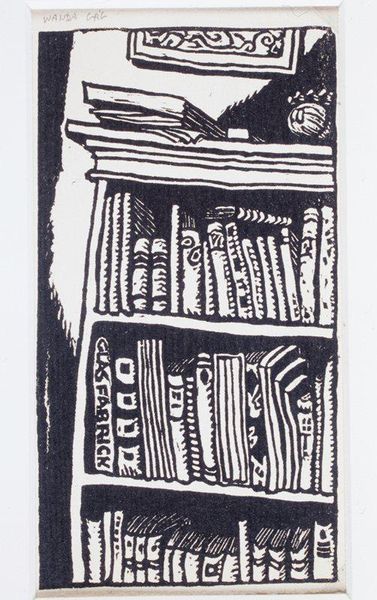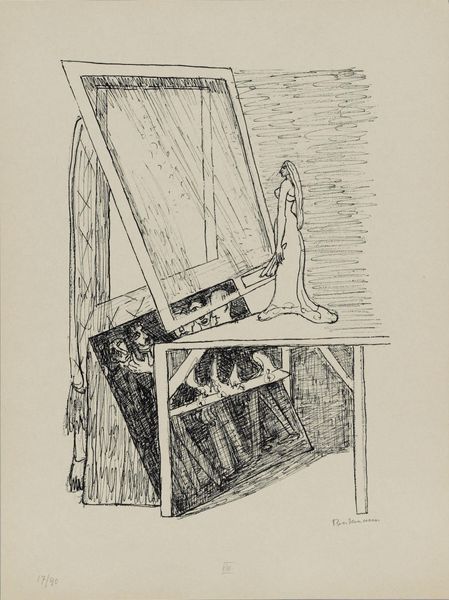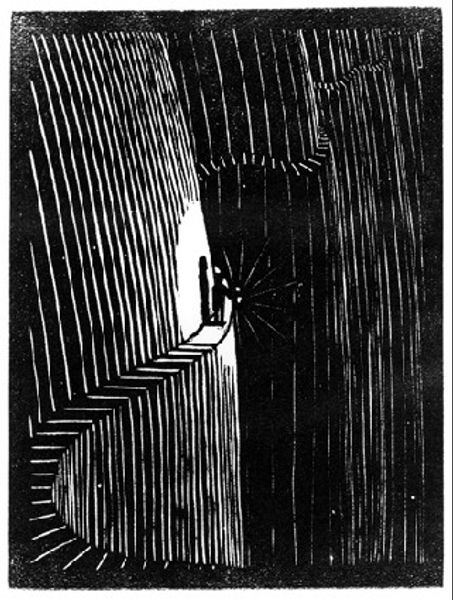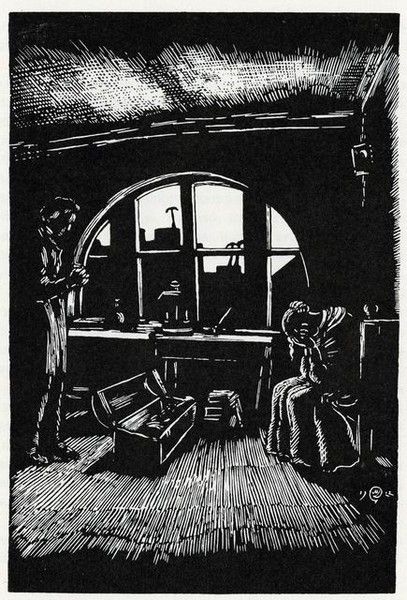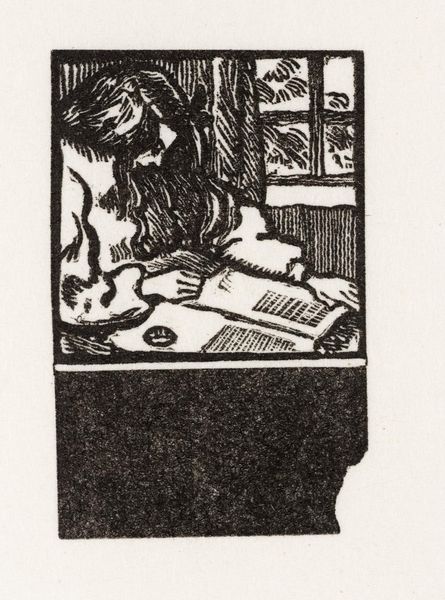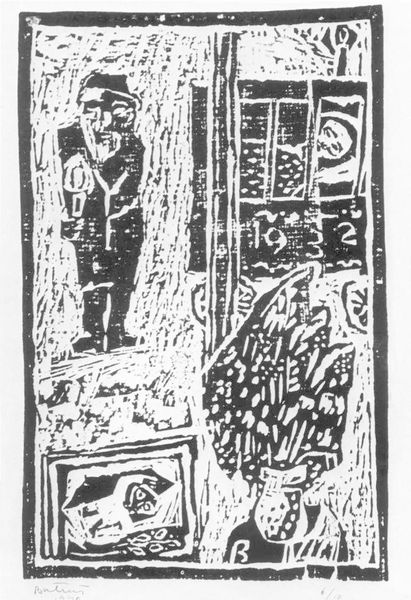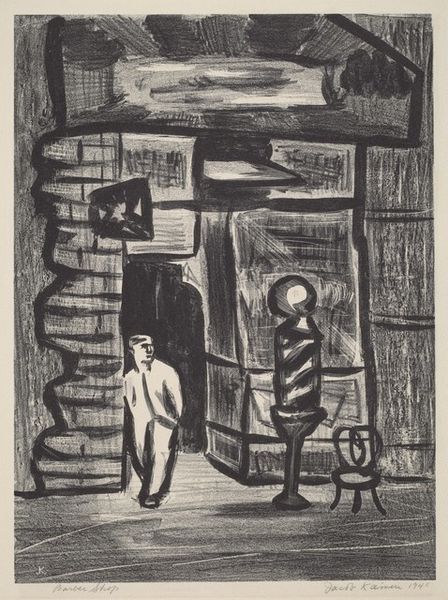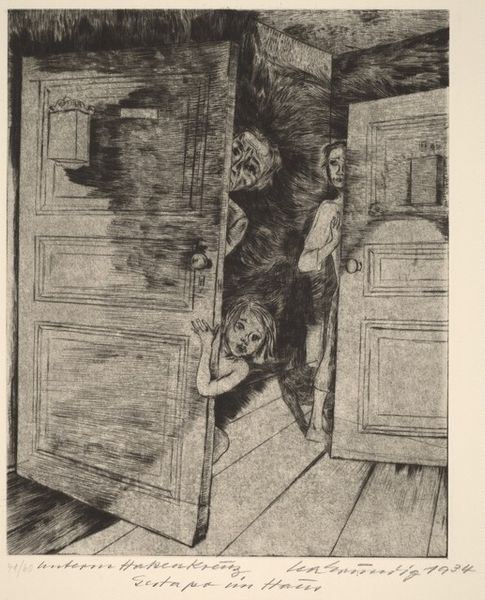
drawing, print, paper, ink
#
drawing
# print
#
pen illustration
#
pen sketch
#
paper
#
ink line art
#
ink
#
sketch
#
pen-ink sketch
#
line
#
pen work
#
cityscape
#
modernism
Copyright: Public domain US
Curator: Here we have Mstislav Dobuzhinsky's 1922 piece, "White Nights," a drawing rendered in ink on paper, also reproduced as a print. Editor: Stark! The contrast is almost overwhelming. It evokes a sense of confinement, a peering-out into a world just beyond reach. Curator: Precisely. Look closely at the mark-making; Dobuzhinsky utilizes short, deliberate ink strokes to define the architectural structures seen through the window. The thick, dark lines composing the window frame draw your eye immediately. Editor: And those same dark strokes lend themselves to interpreting material. This is rough timber, unplaned; these are working-class homes viewed from within. The image’s impact lies in the contrast. Curator: Consider the artistic environment in which Dobuzhinsky worked. The post-revolutionary period in Russia brought immense social change and upheaval. Dobuzhinsky, like many artists, had to navigate new ideological mandates. Editor: So the formal qualities serve the message. The rigid grid of the window opposes the rather delicate, intricate urban landscape seen beyond. The person silhouetted almost merges with the gloom surrounding the opening; this is about observation and the limitations that constrain movement. Curator: Notice how he positions the observer inside, casting a somber silhouette that serves as a barrier between the viewer and the cityscape. Is this about the restrictions the artist and, by extension, all citizens faced during the early Soviet era? The choice of materials—accessible, humble ink and paper—speaks to the reduced resources and heightened creative resourcefulness. Editor: Right! In a way, Dobuzhinsky refrains from idealizing labor through sophisticated presentation. The roughness aligns itself to the direct visual language to reveal the state of post-revolution living conditions. This is neither celebratory nor despairing; the line work gives it tension between these interpretations. Curator: A tension reflecting, perhaps, the complex reality of the era, captured in the gaze through the window. It serves as an understated commentary on living in confinement, of the tangible presence of limitations of human agency. Editor: Ultimately, this visual language gives great nuance. "White Nights" reveals not merely urban life under restraint, but also explores boundaries and conditions of living during a specific moment in history, by way of a stark depiction.
Comments
No comments
Be the first to comment and join the conversation on the ultimate creative platform.
